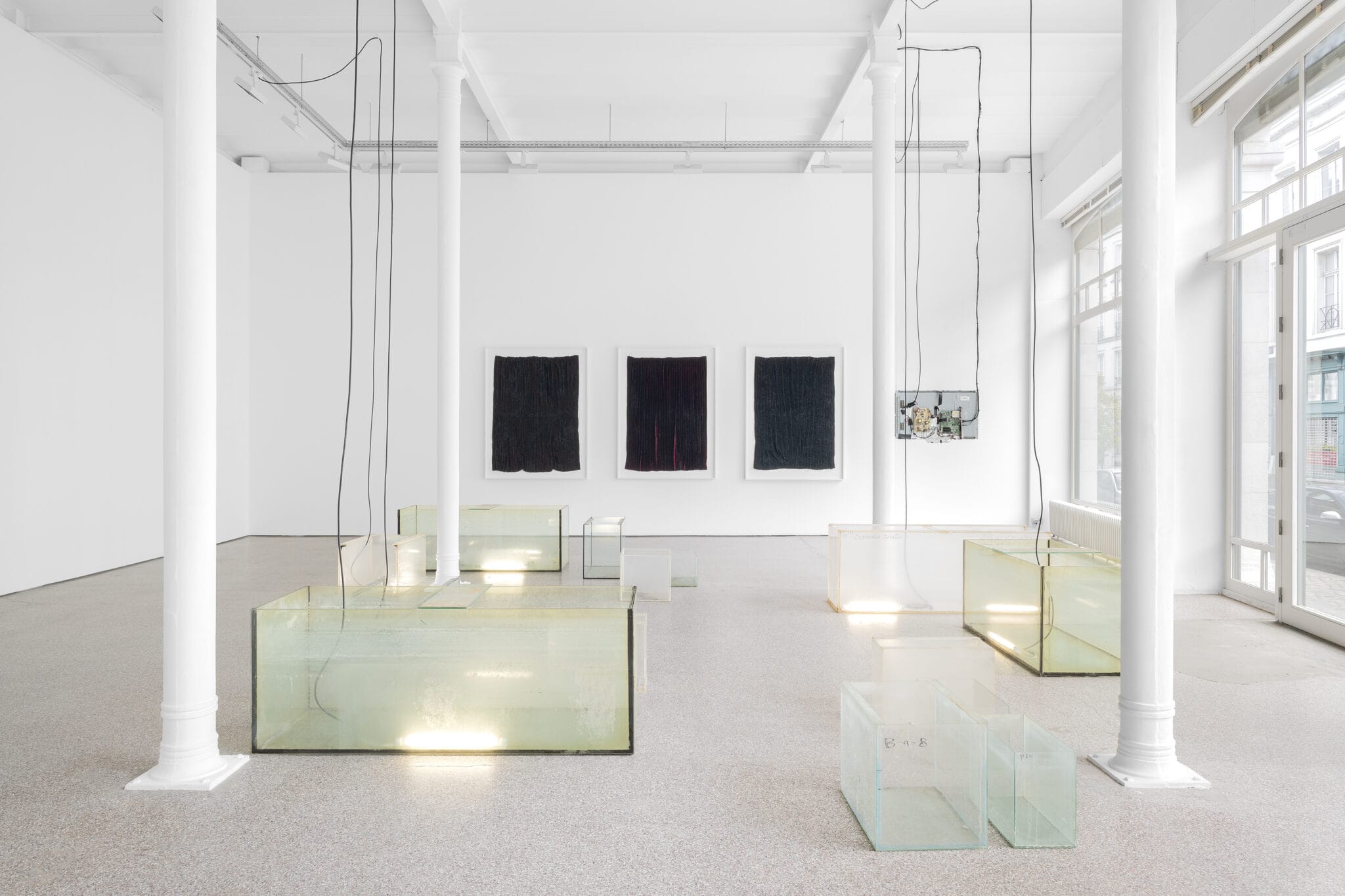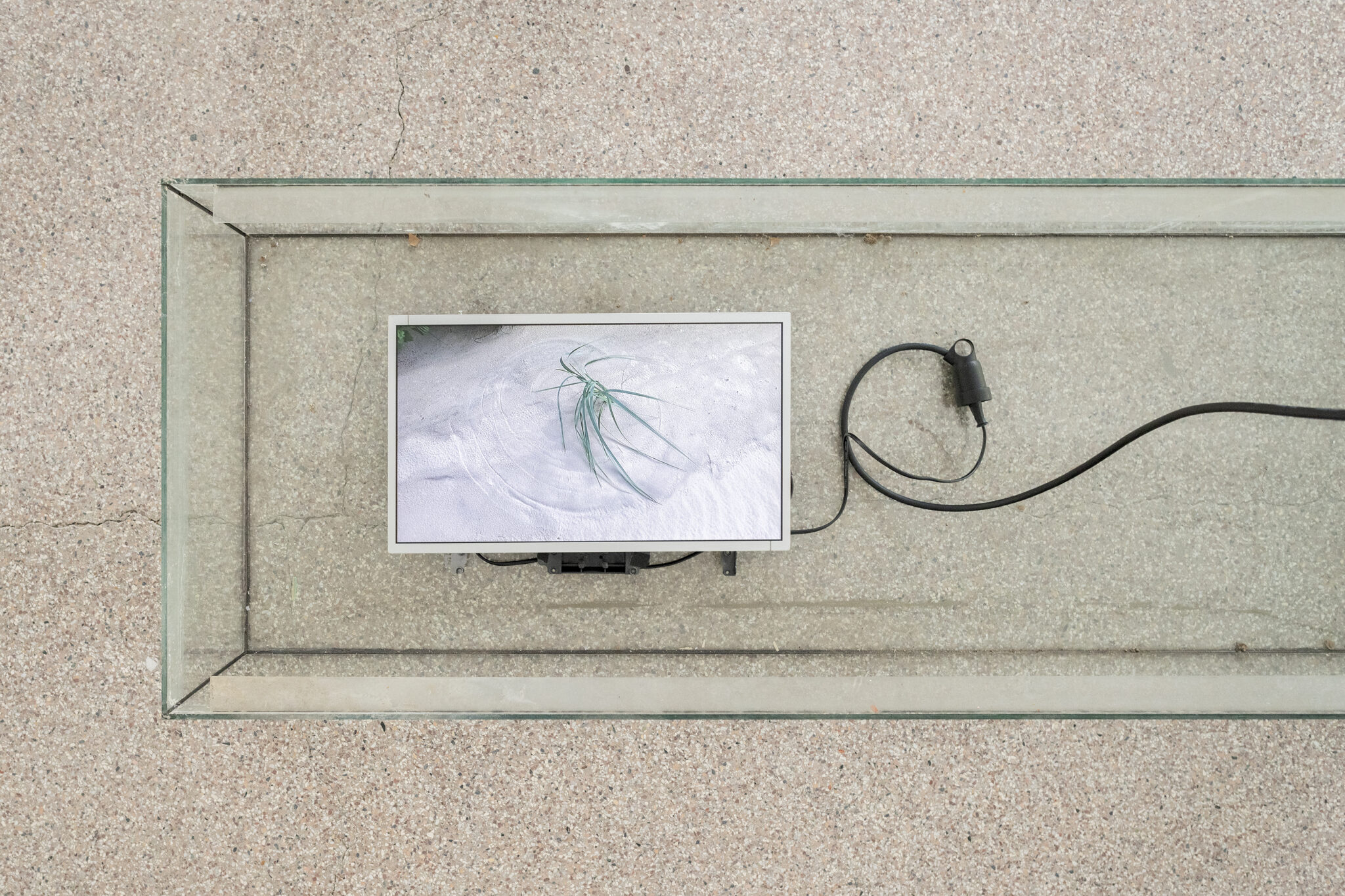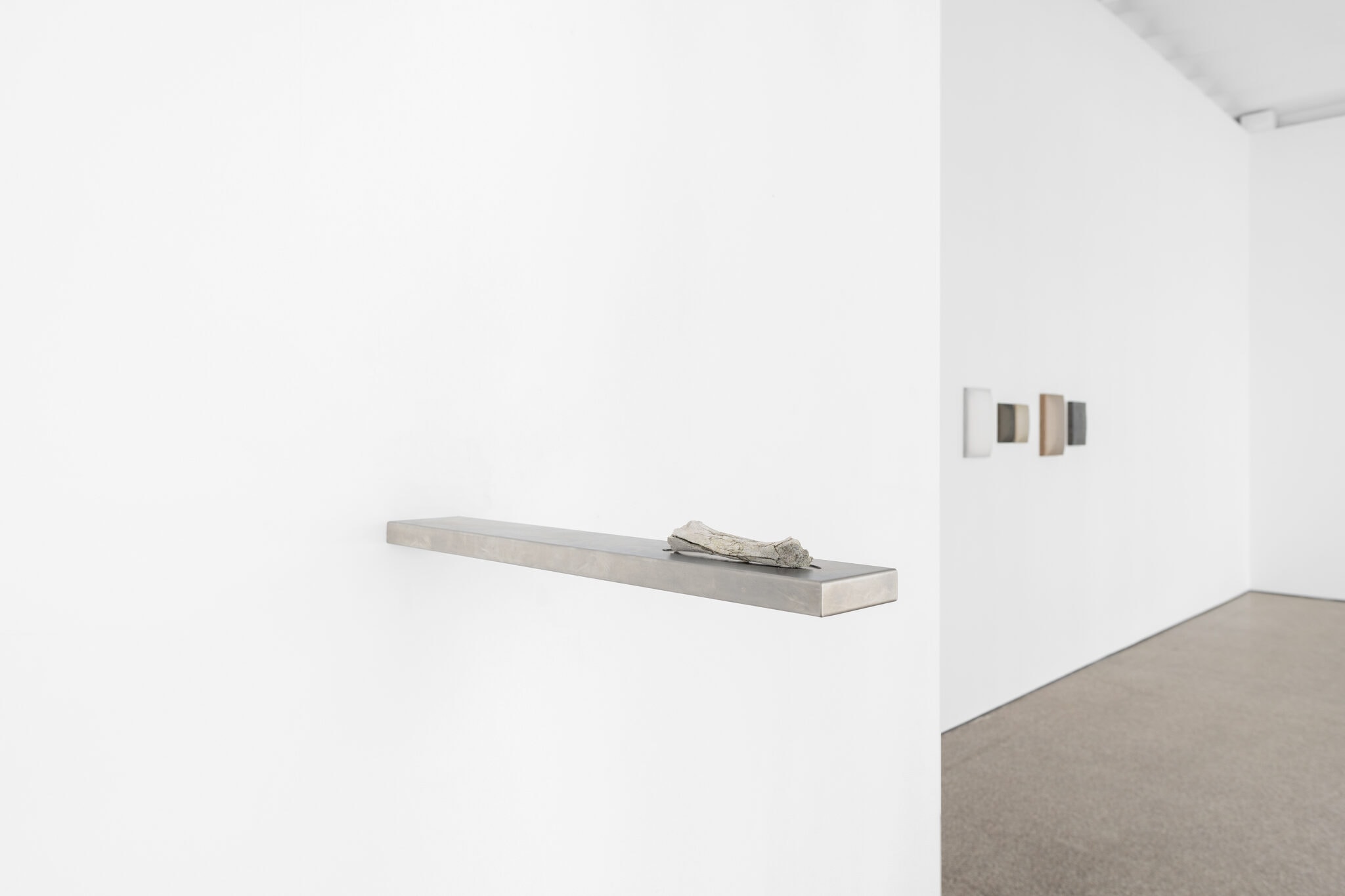The Ghost year is the third exhibition of Belgian artist Edith Dekyndt at the gallery. Conceived like a diary or an index of the artist’s year. It brings together pieces made by using intimate objects during the first months of the year, pieces brought back from an erratic trip to the Baltic Coast as well as elements from the piece Visitation Zone originally devised for the Riga International Biennial.
In this installation, Dekyndt used empty glass vitrines from the Riga Zoo that a woman, in a kind of ritual gesture, filled continually with a small amount a fruits or vegetables made as the Baltic tradition moving the precious foods from one container to another. From the Zoo to the Biennal, these glass vitrines have now made their way into this diaristic exhibition — they bare the marks and dirt from their previous usage (animals who were living inside them).
Through the simple gesture of re-presenting this work, it exists like a material index of itself. Concurrently, the transparent surfaces of its glass structures are themselves the site of a more tangible kind of indexicality found in the accumulation of dust and grime even destruction.
This relationship between time, location and material is explored in a myriad of ways throughout the project; The Ghost Year is also a station, the ultimate motif in an ongoing process of affect, whose works obviously mesh with the intimate experience of mourning. Short cellphone videos, domestic fabric soaked in Black Chinese Ink or underwear’s coated with sugar are just some of the means by which the artist indexes transformative processes that make up life through objects.
Working across video, sculpture, installation, sound and drawing, Edith Dekyndt addresses timeless concerns of time and space. Using a wide range of techniques she makes visible transient physical phenomenon and ephemeral incidents to create a conceptually rich and materially engaged visual language. In praise of what is not clean or pure her work operates like a translation of time into material and vice versa. Edith Dekyndt studies and acts upon the subtle variations she finds in the fabric of our material world to concretize her perceptions of it.






